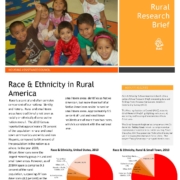HAC News: April 18, 2012
HAC News Formats. pdf
April 18, 2012
Vol. 41, No. 8
• April is Fair Housing Month • Senate subcommittee marks up FY13 THUD bill • USDA appropriations to be considered in subcommittees soon • HUD offers Public Housing Family Self-Sufficiency funding • RD tells states to centralize delivery of Section 502 guarantee program • Final HUD environmental justice strategy posted • Section 8 Annual Adjustment Factors published • Aging population will face housing cost burdens and other challenges • Report examines criminalization of homelessness • Research correlates income inequality and racial segregation • ERS suggests framework for creating rural wealth
April 18, 2012
Vol. 41, No. 8
APRIL IS FAIR HOUSING MONTH. HUD is celebrating with a “Live Free” theme. Numerous states and localities, as well as civil liberties organizations, have also recognized the occasion.
SENATE SUBCOMMITTEE MARKS UP FY13 THUD BILL. Complete details on HUD funding levels have not been released, but a Senate Appropriations Committee press release reports increases from FY12 levels for CDBG, Section 8 vouchers, public housing, homeless assistance grants. Funding for HOME, Native American housing, and HUD housing counseling would remain at FY12 levels. The full Appropriations Committee is scheduled to review the bill on April 19. The House THUD appropriations subcommittee has not yet scheduled a mark-up. Updates will be posted on HAC’s website when available.
USDA APPROPRIATIONS TO BE CONSIDERED IN SUBCOMMITTEES SOON. The Senate Agriculture Appropriations Subcommittee is expected to mark up a bill next week, and its House counterpart to do so by mid-May.
HUD OFFERS PUBLIC HOUSING FAMILY SELF-SUFFICIENCY FUNDING. Public housing agencies and tribes or Tribally Designated Housing Entities can apply by May 30 for funds to hire FSS coordinators. Details are posted on HUD’s site and at grants.gov. Contact Dina Lehmann-Kim, HUD, 202-402-2430.
RD TELLS STATES TO CENTRALIZE DELIVERY OF SECTION 502 GUARANTEE PROGRAM. A March 1 Unnumbered Letter asks state offices to submit plans by May 1 that maximize efficiency and reduce staff time spent on program delivery. The UL also reminds state offices that other centralization efforts will be forthcoming. Read the UL online or contact an RD office.
FINAL HUD ENVIRONMENTAL JUSTICE STRATEGY POSTED. The strategy is intended “to improve and expand HUD’s commitment to avoiding disproportionately high and adverse human health or environmental effects on minority and low-income populations, as well as creating geographies of opportunity.” See Federal Register, 4/16/12, or HUD’s site. Contact Sunaree Marshall, HUD, 202-402-6011.
SECTION 8 ANNUAL ADJUSTMENT FACTORS PUBLISHED. FY12 AAFs will be used to adjust contract rents on Section 8 contract anniversaries and are posted at HUDuser.org. Contact Catherine Brennan, HUD, 202-708-3000.
AGING POPULATION WILL FACE HOUSING COST BURDENS AND OTHER CHALLENGES. In Housing an Aging Population: Are We Prepared?, the Center for Housing Policy reports that older adults are more likely than younger adults to have housing affordability challenges. Many older adults lack access to affordable services that could help them age in place, and to meaningful housing choices. The study considers other trends as well, and offers policy recommendations.
REPORT EXAMINES CRIMINALIZATION OF HOMELESSNESS. In Searching out Solutions: Constructive Alternatives to the Criminalization of Homelessness, the U.S. Interagency Council on Homelessness and the Justice Department suggest that, instead of prohibiting sleeping in public spaces or panhandling, localities could offer comprehensive systems of care, collaboration between law enforcement and service providers, and alternative justice system strategies such as specialty courts and reentry programs.
RESEARCH CORRELATES INCOME INEQUALITY AND RACIAL SEGREGATION. HUD reports that a geographic information system (GIS) analysis of data on white and African-American residents shows that while income inequality exists throughout the U.S., it is more likely in the South to be associated with racial segregation. When a map of the U.S. highway system is added it can be seen that many of the areas with high income inequality and high proportions of Black population are located relatively far from regional transportation systems. Two articles in HUD’s Cityscape journal describe the research and its policy implications.
ERS SUGGESTS FRAMEWORK FOR CREATING RURAL WEALTH. USDA’s Economic Research Service notes that economic growth requires physical, financial, social, political, and other types of assets, and that creating wealth is highly context-dependent. Rural Wealth Creation: Concepts, Strategies, and Measures discusses the role of wealth creation in the rural development process, how wealth can be created in rural communities, and how its accumulation and effects can be measured.

